The four largest coffee producing areas in Colombia is one of the few individual coffees sold under the national name in the world.

Professional coffee knowledge exchange more coffee bean information please follow the coffee workshop (Wechat official account cafe_style)
Colombia is the world's third largest exporter of coffee, mainly producing Arabica coffee and the largest exporter of Arabica beans. Colombia is rich in products, especially coffee, flowers, gold and emeralds are known as the "four treasures". Colombia is located in the northwest of the South American continent, bordering Central America and Panama. From the aerial view, it looks like it has been scratched by a cat on the west side, leaving three vertical paw marks from north to south. The country's famous producing areas are scattered in the Andes with fertile volcanic soil.
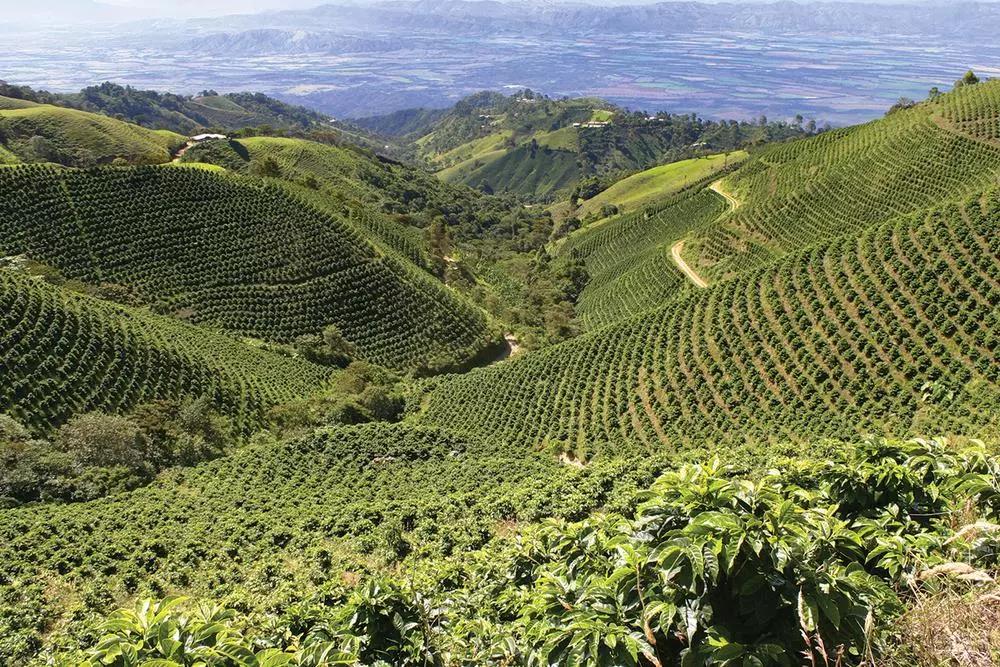
In 1808, a priest introduced coffee to Colombia for the first time from the French Antilles via Venezuela. Today, the country is the second largest coffee producer after Brazil, the world's largest exporter of Arabica coffee beans and the world's largest exporter of washed coffee beans. Colombian coffee is often described as silky and smooth. Of all the coffees, it is the most balanced, soft, smooth and ready to drink, and it has won praise that no other coffee can match: known as "green gold".
Volcanic soil + family management
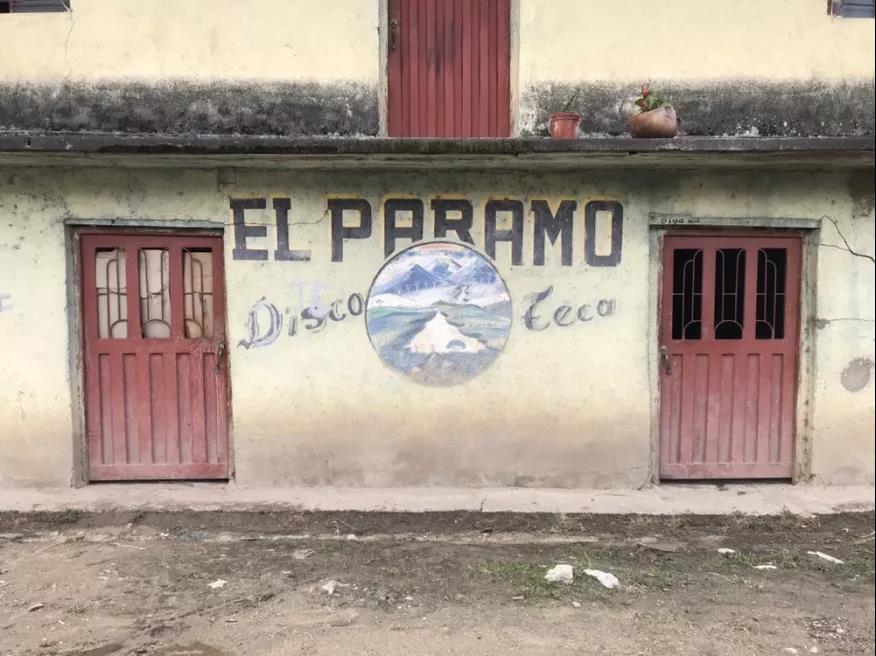
It is said that coffee was introduced by missionaries from Venezuela in 1730 and was grown in the southeast of the country. Later, due to civil war and political reasons, it gradually moved to the western mountainous areas. In an ideal environment of high altitude and volcanic soil, Colombian coffee has been pushed by high-end consumers in the United States and Japan since the 1940s to be ripe before it can be picked manually. They cherish the piece of land they live in, from choosing fertilizer to reclamation will be enough, so there is less land fatigue.
In addition to coffee, the locals will plant tall trees or banana trees around the coffee trees. Build an Arbor for coffee trees at the seedling stage to ensure the cool and humid environment needed for coffee growth. Due to the high humidity and small temperature difference in the coffee forest, the coffee beans mature slowly. In addition to the inherent conditions, there is another main reason why Colombian coffee is better than Brazil: family management. They do not have heavy machinery to harvest and irrigate, nor do they have spare money to hire workers. All coffee fruits are conducive to the accumulation of caffeine and aromatic substances, so coffee quality is the best.
| | production season in production area |
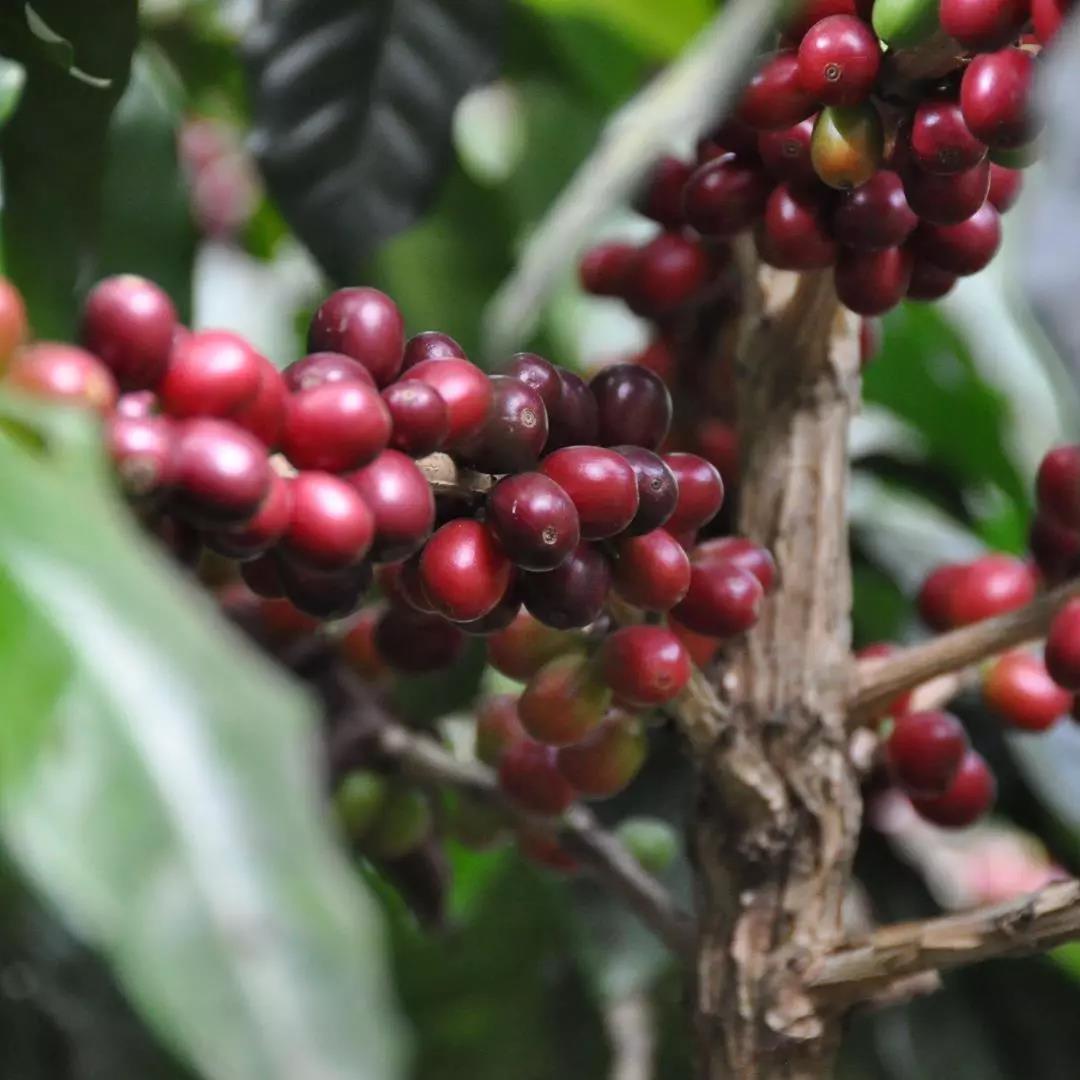
The latitude span of the Colombian producing area and the topographic influence of the Andes are divided into three regions from south to north, northern, central, and southern; the northern part of the south has a distinct production season, and the central part has two primary and secondary seasons according to the north or the south, respectively. there are two harvest seasons in a year, the main season is from October to January, and the secondary season is from April to July.
Columbus coffee cultivation is distributed along the Andes Mountains, from south to north, roughly divided into northern producing areas (green), central producing areas (orange, purple) and southern producing areas (yellow), in which orange-purple areas have primary and secondary production seasons. green and yellow areas have one season.
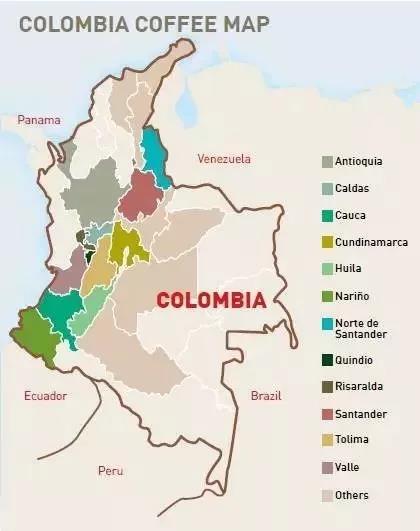
Harvest season [by region]
Due to the differences in geographical and climatic characteristics from north to south, the north-south production season is just opposite, while the central part has its own primary and secondary production seasons according to whether it is south or north. It can be said that beans are produced all the year round. We mainly distinguish regions according to winter production season and summer production season.
The winter season is from September to December, including the following areas
Magdalena Magdalena common items
Santander Santander
Antioquia Andi O'Quia common items
North of Santander North of Santander
Boyaca Boyaca
Meta Matta
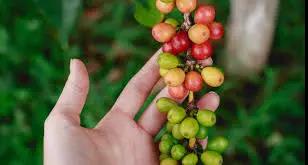
The central region near the north will have two primary and secondary seasons, the main season is from September to December in winter, and the secondary season is between April and May in summer.
Caldas Caldas
Risaralada Salala da
Parts of Cundinamarca Quintina Maka have begun to emerge in the market.
Some areas of Quinido Jindio began to emerge in the market.
Common items of sub-ashes in some areas of Tolima Tolima
The central region near the south will have two primary and secondary seasons, the main season is from March to June in summer, and the secondary season is from October to November in winter.
Parts of Valle Waye began to emerge in the market.
Parts of Quindio Kingdeo
Cundinamarca Quintina Maka part of the area
Part of Tolima Tolima
The summer production season is from March to June, including the following areas
Part of Valle Waye
The bone ash grade of Cauca test is common.
Cundinamarca Quintina Maka part of the area
Huila Huilan ashes are common
Narino Na Linglong secondary bone ash grade is common
Note: the production season here refers to the stage of post-processing when the coffee fruit is ripe and harvested in the producing area. Usually 2-3 months after this stage, the beans of the real new production season will arrive at our consumption end.
| Coffee type
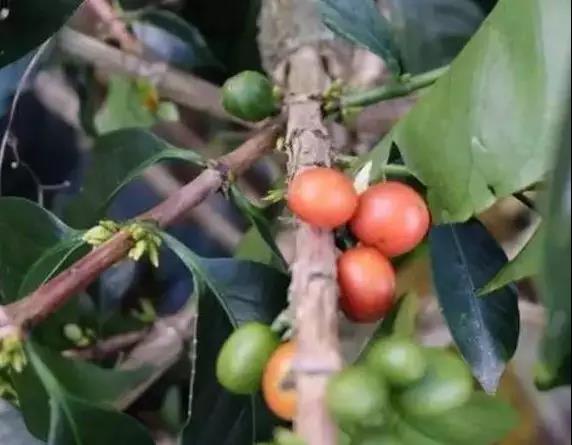
In addition to the common coffee varieties in the Americas, such as Kaddura Caturra, Bourbon Bourbon, Tippika Typica and Parkmara, Colombia also has its own three disease-resistant varieties, namely Castillo Castillo and Tabi Tabi Colombian Colombia with the same name as the country. Of course, there are also some rare and valuable varieties such as Rosa Gesha, small-grained Mocha Mocca, Rume Sudan Romer Sultan, Eugenioides Eugene Odes, Laurina pointed Bourbon, Maraguesa Mara Rosa (a natural hybrid between Marago Rippi and Rosa).
In the Colombian coffee feast had the honor to drink a second to kill a lot of Colombian rosy summer pink bourbon, just know that there is such an amazing variety of coffee. Generally speaking, bourbon is a coffee tree that belongs to a branch of Arabica species, generally bearing red fruit, called red bourbon, in addition to yellow bourbon, orange bourbon, yellow bourbon relatively low yield, but better quality.
Some experts say that the pink bourbon of Columbia Rose Summer is not bourbon.
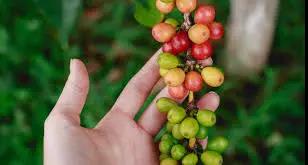
Recently, there is also a Colombian sun bean. Called wush wush, it is rare to see sun beans in Colombia. Look at the tweet [there is a bean, it's hot … Is Wush Wush coffee variety or coffee producing area? ]
The early varieties planted in Colombia were the old iron pickup and bourbon, which were replaced by Kaddura in 1970; Kaddura is not only more productive per plant than iron pickup and bourbon, but also can be planted more per unit of acreage because the tree is more compact.
Since 1961, CENICAFE began to study Timor varieties of Robusta blood, and then selected Timor and Caturra into Columbia's Katim Catimor series. After five generations of breeding, CENICAFE released Colombia's first disease-resistant variety Colombia in 1982, and then after the emergence of leaf rust in 1983, Colombia varieties began to be planted in large quantities.
Subsequently, CENICAFE continued its research and development, releasing the second disease-resistant variety Tabi (a hybrid of iron pickup, bourbon and Timor) in 2002, and the most functional disease-resistant variety Castillo so far in 2005. After the outbreak of leaf rust in 2008, Colombia began to vigorously promote Castillo cultivation.
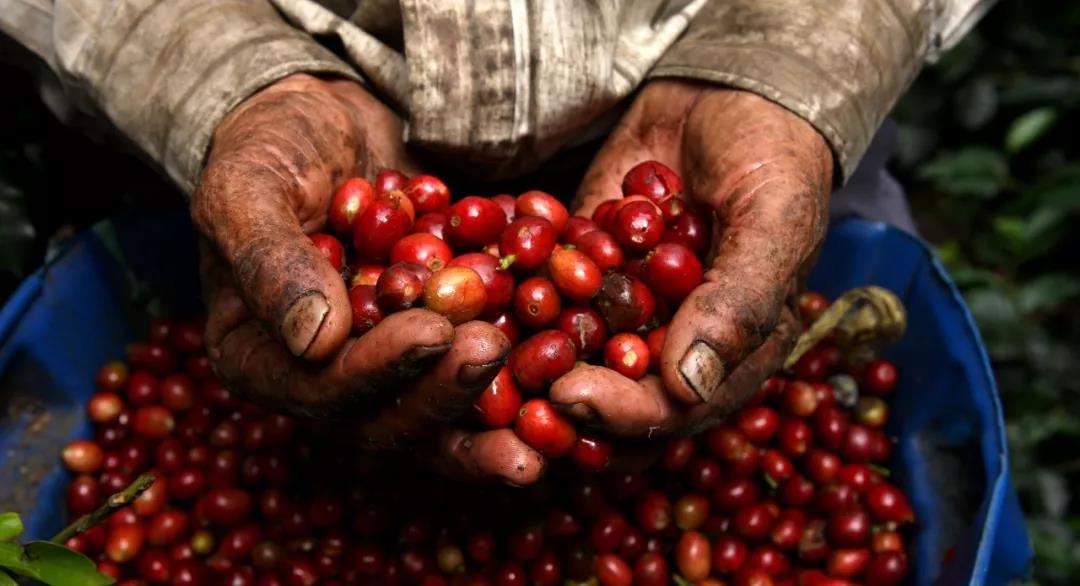
| | handling method |
Colombian coffee is mostly washed, and every small farmer family has a small special processor (Ecomill or Eco-Pulper). The harvested coffee fruit is poured into it, which removes not only the peel and pulp, but also most of the pectin, and only a very small amount of water is needed. Next, the shell beans with a small amount of pectin will go into a small pool or container, which may be a cement pool (some tiles) or a stainless steel bucket that will ferment overnight and loosen the residual pectin. Rinse with clean water the next day, and the washing process is completed.
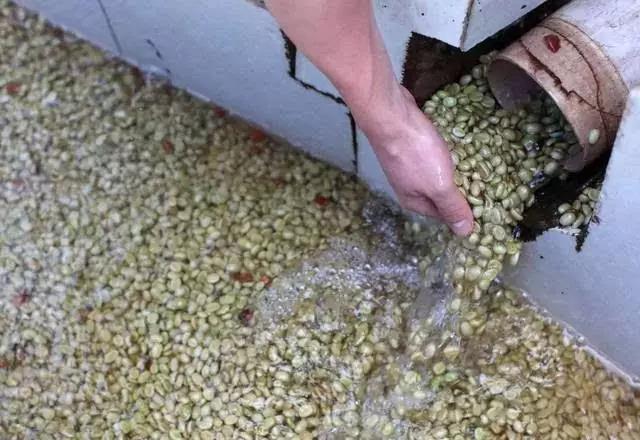
Dry, according to the weather, if the weather is good, of course the first choice is natural drying, there will be a small shed laid on the wooden scaffolding to dry in the shade; otherwise, it will be laid on an empty cement floor for drying; if the weather is not good, if it rains continuously, then use a dryer to dry, the dryer will have an intake temperature control, usually about 50 degrees Celsius.
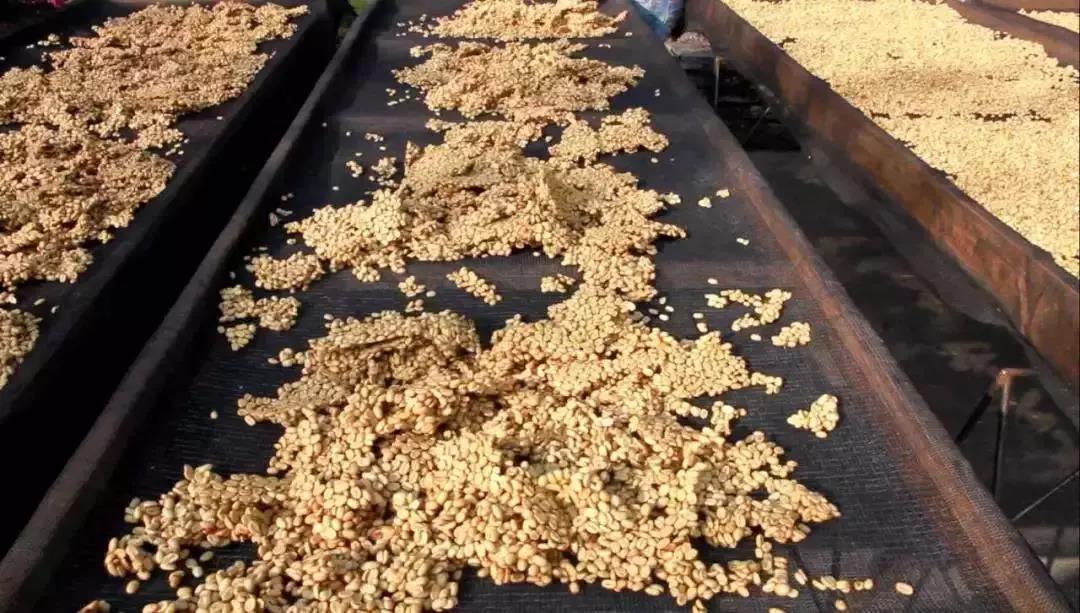
| Coffee producing area
Colombia is best known for producing areas such as Medellin, Armenia and Manizales, which are traditionally referred to as "MAM".
Colombia's boutique bean producing areas are mainly in the south, more than 1500 meters above sea level, including San Augustin, Huila in Huilan province, Popayan, Cauca in Cauca province, Nari ñ o province, and Tolima province, all of which have delicate sour and raspberry aromas, caramel aromas and full sweetness.
From north to south, the producing areas of Colombia are:
Santander/North of Santander Santander and North Santander
Santander is a famous producing area in northern Colombia, facing Magdalenaho to the west and growing about 1400-1600 meters above sea level. The coffee beans in this area are famous for their strong taste, long aftertaste and unique fresh vegetation flavor.
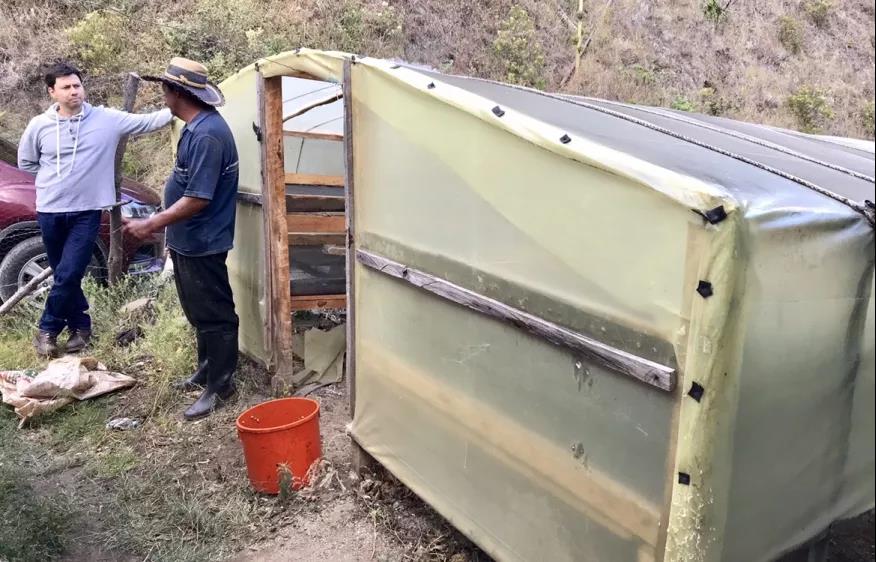
Antioquia Antioquia
Antioquia province, located in north-central Colombia, grows 126000 hectares of coffee and produces 18% of Colombia's coffee beans, second only to Huila province. Most of the province is alpine terrain belonging to the Andes, but it is blown by the warm Caribbean sea breeze. Medellin, the provincial capital, is Colombia's second largest city and an important coffee producing area in Colombia.
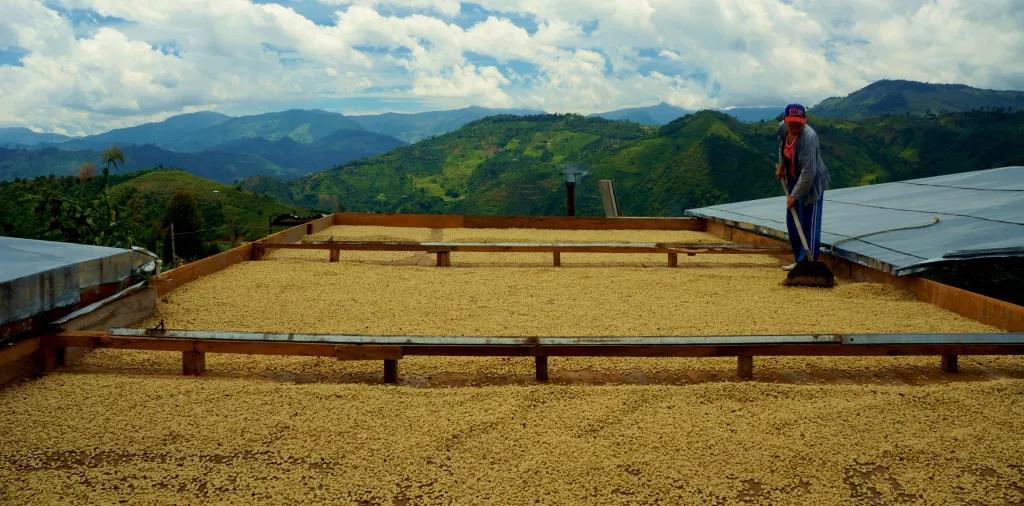
Tolima Tolima
Tolima is close to huila and cauca, where the Andes (M. Andes) and Cordillera Mountains (M. Cordillera) runs longitudinally, and between the two famous mountain systems is the Magdalena River (R. Magdalena)。
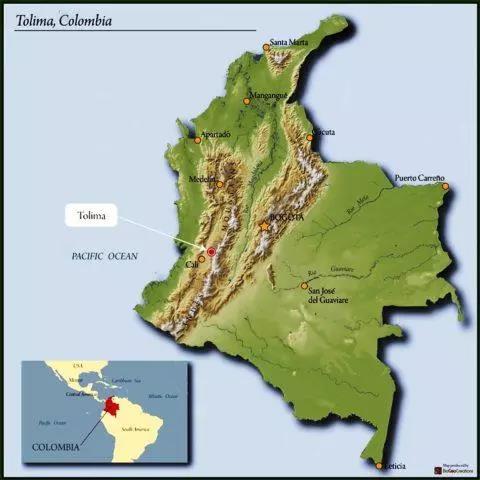
Tolima's name comes from the people who first lived here,"Pijaopeople", in the language of this ancient people (Pijao word), tolima means "covered with snow","snowed". Tolima farms are generally slightly larger than other southern Colombia farms, ranging from 10 to 15 hectares. Cooperatives also prevail here, where farmers send their own small batches of fresh coffee to the cooperative's processing plant. Some farmers will also choose to process it themselves, using their own small-scale processing facilities that can handle the harvest of the day.
Huila Huilan
Huilan Province is located in the southern part of the Central Mountains in southern Colombia and is the country's most famous boutique coffee-producing area. This area is surrounded by hills, planted at an altitude of more than 1500 meters, where the most important rivers in Colombia converge, bringing considerable water resources and moisture.
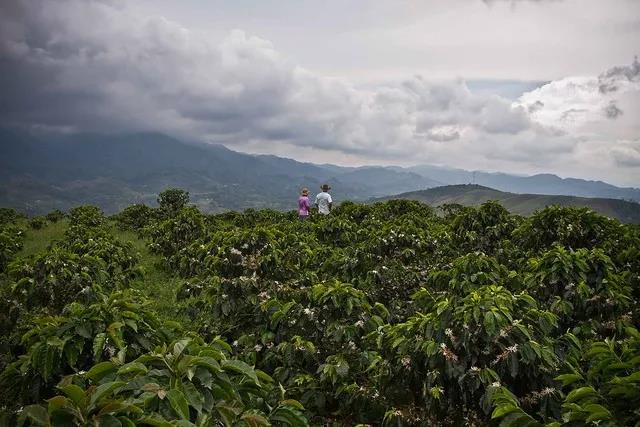
Contrary to the general impression that a large amount of Colombian coffee is balanced and smooth, the fine Goran products produced by many small farmers in micro batches are actually very characteristic of the flavor of the producing area. In recent years, with the attention to the quality of coffee and the demand for fine coffee in the international market, the original bean size grading system has been gradually abandoned to micro-batch (Micro-regional selections) provided by small farmers in micro-production areas, with dozens of small farmers providing their unit harvest into a micro-batch to sell, and because of this, they have more opportunities to measure by batch-by-batch cup. Directly pick out a lot of high-quality specific smallholder coffee.
Cauca test card
Cauca province is a certified coffee producing area in Colombia, with an average elevation of 1758m and a maximum elevation of 2100m. The topography, precipitation, temperature and volcanic soil of the area prepare suitable conditions for the growth of coffee. 80% is mountainous, with parallel mountain systems in the east and middle, part of the Andes, and the central mountain system includes two major volcanoes, Sotara and Petacas. The border province of Cauca, like other southwestern producing areas, has a distinct unimodal distribution (monomodal). The dry season mainly occurs from August to September each year, followed by a concentrated coffee season followed by the following year's concentrated coffee harvest season.
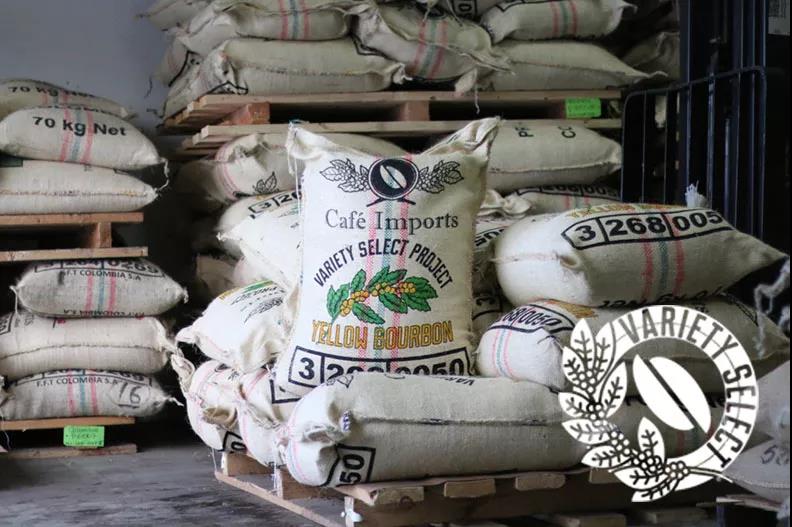
Cauca province is a certified coffee producing area in Colombia, with an average elevation of 1758m and a maximum elevation of 2100m. The topography, precipitation, temperature and volcanic soil of the area prepare suitable conditions for the growth of coffee. 80% is mountainous, with parallel mountain systems in the east and middle, part of the Andes, and the central mountain system includes two major volcanoes, Sotara and Petacas. The border province of Cauca, like other southwestern producing areas, has a distinct unimodal distribution (monomodal). The dry season mainly occurs from August to September each year, followed by a concentrated coffee season followed by the following year's concentrated coffee harvest season.
The biggest difference in climate with other producing areas is probably the relatively large temperature difference, with a daily average temperature of 11 ℃ and a daytime average temperature of 18 ℃. The temperature difference between day and night is an important factor in quality coffee. Low night temperatures and relatively higher elevations slow down the growth of coffee, allowing coffee seeds and beans to more fully absorb the nutrients of coffee fruits, as well as better acidity and commendable special sweetness of Coca Coffee.
What is the Coca Zhuoyue Cup?
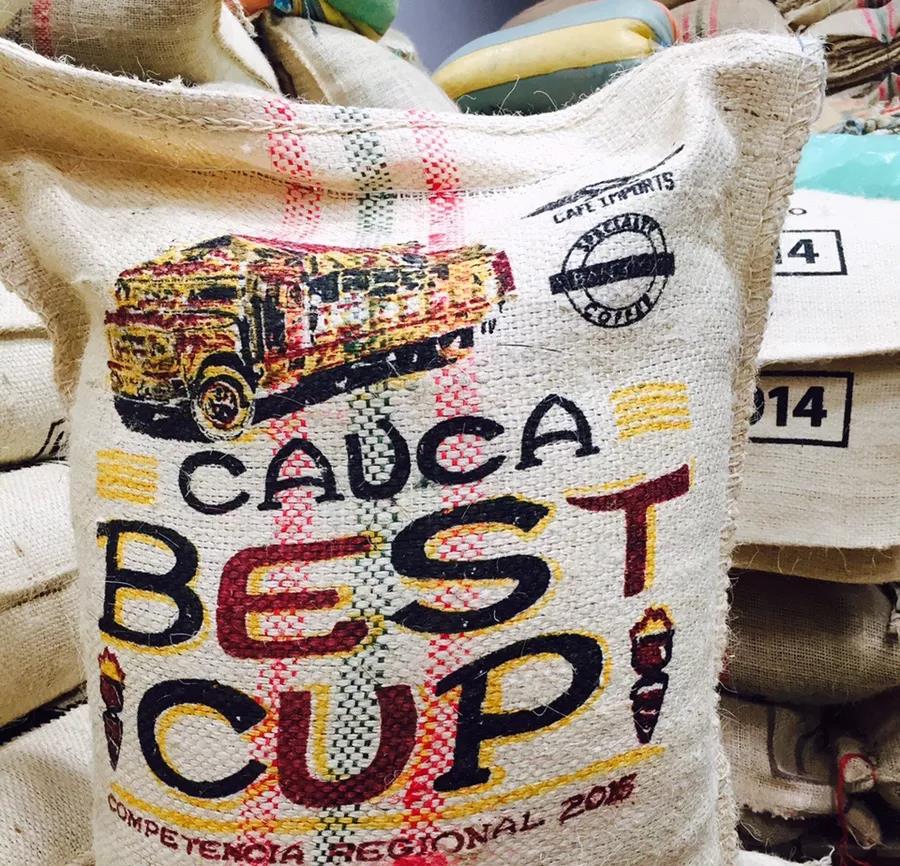
Bidding events such as the Coca Joyo Cup (Cauca Best Cup) have been held since 2014, jointly organized by well-known American traders, local exporters and the Coffee Association of Colombia. The first Coca Zhuoyue Cup received about 200 samples in 2014, compared with more than twice the number in 2015. About 500 small farmers will compete for the competition, and the organizers will select the top 30 from more than 500 samples. The top 12 will be selected by the international jury cup, and raw bean sellers and bakers from all over the world will bid on the last day of the event.
Competitions like the Cauca Cup are actually helpful. It not only increases the income of small farmers, but also has the opportunity to improve their living conditions, but also makes them more willing to invest and improve their coffee production to produce higher quality coffee.
Local judges from 500 batches, only after four rounds of cup tests selected 30 batches to enter the finals, and 30 international judges conducted two rounds of cup tests to compare the top 10.
Narino Na Linglong
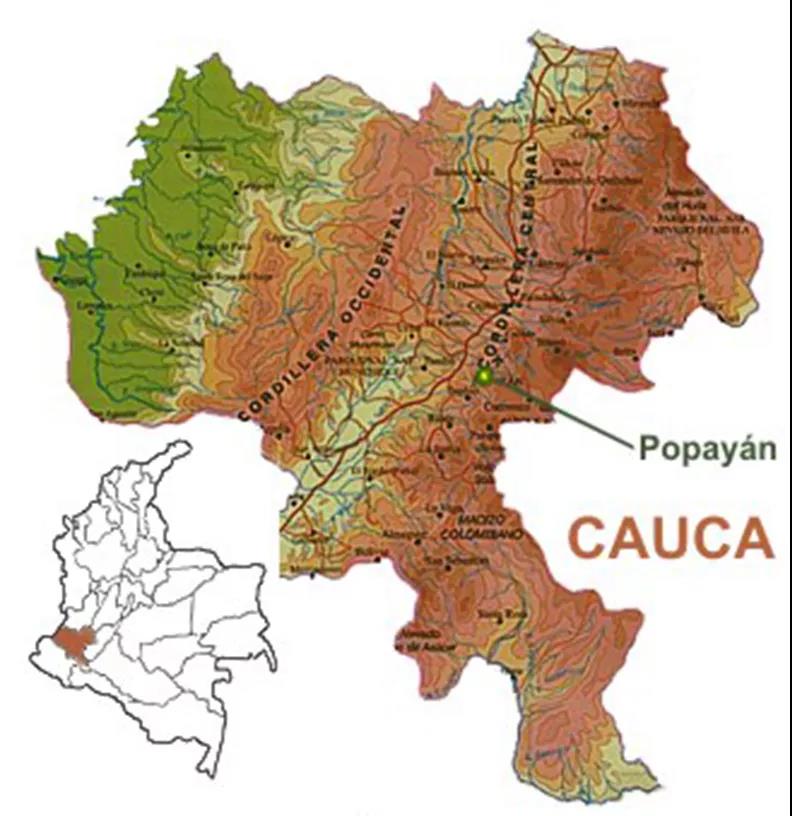
Narino province is located in the southwest of the country, facing the Pacific Ocean to the west and Ecuador (Ecuador) to the south. The Andes Mountains run through the province. Coffee is grown on a high-altitude cloud belt of 1600 Murray 2300. The soil is fertile volcanic geology, the bean shape is small but full, and the color is green. Most of the annual output in Nalinglong producing area is purchased by large American bean merchants.
The province of Narino is located in the southwest of Colombia, bordered by the Pacific Ocean to the west and neighboring Ecuador (Ecuador) to the south, the Andes Mountains run through the province, where there are magnificent mountains and beautiful scenery, and many rivers flow south through the region, belonging to Colombia's alpine coffee growing area, giving birth to many small farmers of fine coffee. The total annual output of that Linglong province is about 150000 bags, while the part belonging to fine beans is only about 6000 bags.
| Coffee rating
Columbia coffee is graded according to particle size, Supremo is the highest order of more than 17 mesh, followed by Excelso16 order-14 mesh.
| | FNC |
The Colombian Coffee producers Association FNC, including the Colombian National Coffee Research Center CENICAFE, regional coffee production associations (Colombia has 32 regional Departments, of which 20 are coffee growers), traders, international roasters, etc.
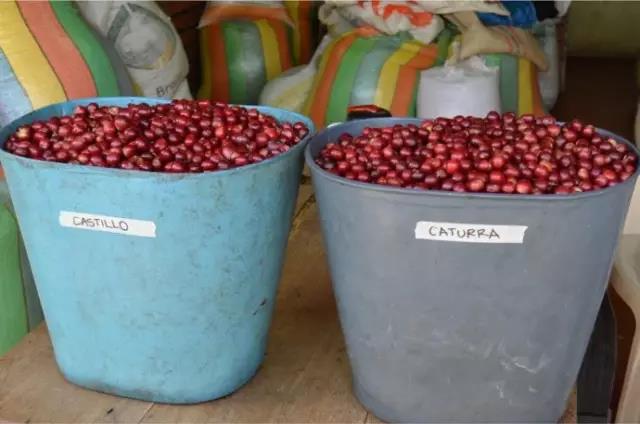
The biggest purpose of FNC is to be the spokesman of Colombian Coffee, promising that FNC is willing to buy as long as coffee farmers are willing to sell coffee. FNC not only works as the international ambassador of Colombian Coffee to do coffee marketing in the international market, and successfully creates the image of "Uncle Juan"; at the same time, Colombia has also invested a lot of manpower and material resources to participate in farmers' planting and production, management and continuous operation.
CENICAFE was founded in 1938, as the technical support of FNC, committed to coffee variety breeding, farmers planting production agronomic training.
Important Notice :
前街咖啡 FrontStreet Coffee has moved to new addredd:
FrontStreet Coffee Address: 315,Donghua East Road,GuangZhou
Tel:020 38364473
- Prev

Introduction to the species of coffee beans in Papua New Guinea
Papua New Guinea is an island country in the western South Pacific and a member of the Commonwealth. The name of the country consists of Papua and New Guinea. There are many small islands here, about 600 in size. It is adjacent to Indonesia and Australia to the south. It belongs to the Asia-Pacific region, but it is a country in Oceania. Located in the tropical climate, high temperature and rainy. Rich and rich volcanic rock and soil
- Next

Costa Rican coffee beans and coffee beans
Costa Rica has many advantages, but it must be taken into account that it increases the additional transportation costs, which may well make coffee production unprofitable. Costa Rican coffee has adopted new technologies to increase efficiency, including the use of electric eyes to select beans and identify beans of irregular size. Tarasu is located in the south of San Jos, the capital of the country, and it is heavily affected by the country.
Related
- Does Rose Summer choose Blue, Green or Red? Detailed explanation of Rose Summer Coffee plots and Classification in Panamanian Jade Manor
- What is the difference between the origin, producing area, processing plant, cooperative and manor of coffee beans?
- How fine does the espresso powder fit? how to grind the espresso?
- Sca coffee roasting degree color card coffee roasting degree 8 roasting color values what do you mean?
- The practice of lattes: how to make lattes at home
- Introduction to Indonesian Fine Coffee beans-- Java Coffee producing area of Indonesian Arabica Coffee
- How much will the flavor of light and medium roasted rose summer be expressed? What baking level is rose summer suitable for?
- Introduction to the characteristics of washing, sun-drying or wet-planing coffee commonly used in Mantenin, Indonesia
- Price characteristics of Arabica Coffee Bean Starbucks introduction to Manning Coffee Bean Taste producing area Variety Manor
- What is the authentic Yega flavor? What are the flavor characteristics of the really excellent Yejasuffi coffee beans?

